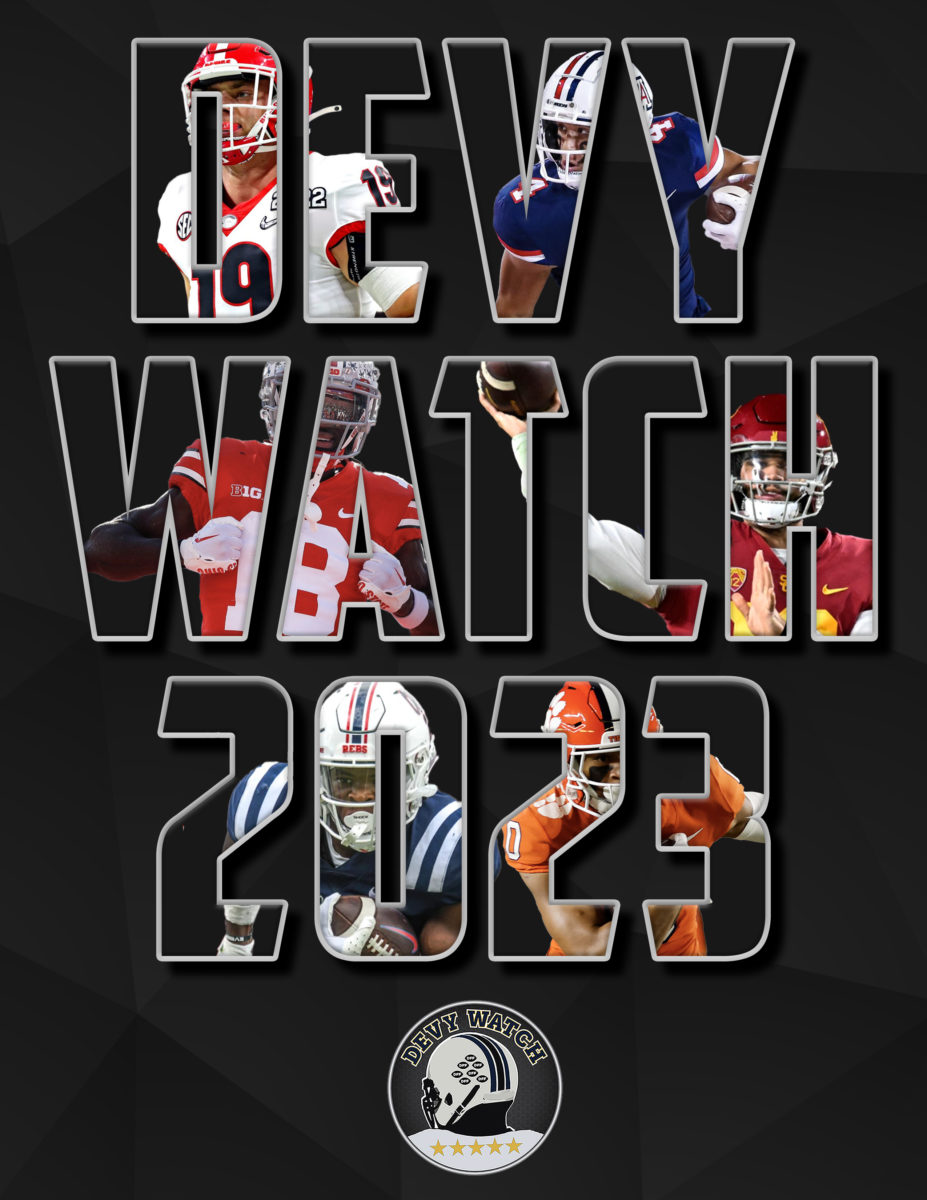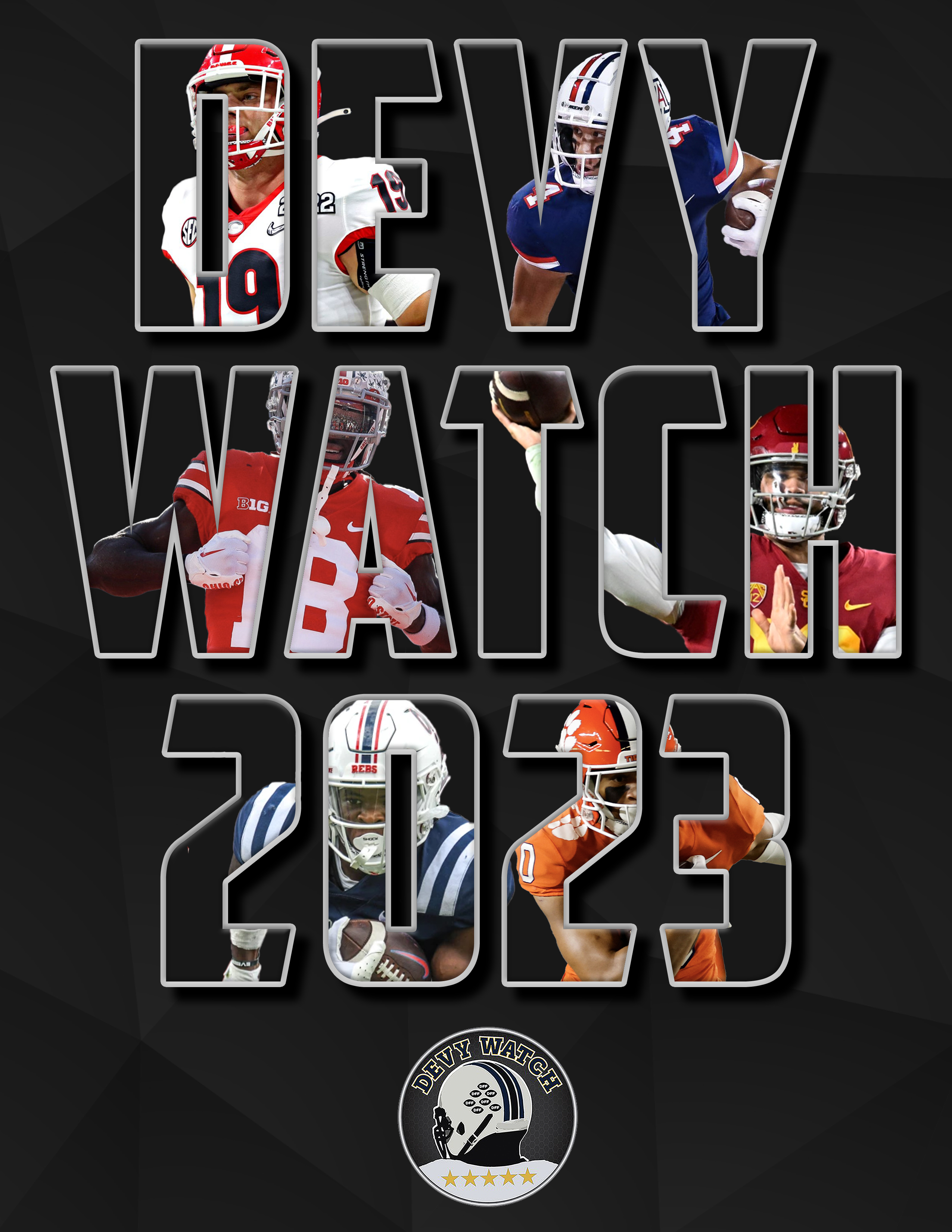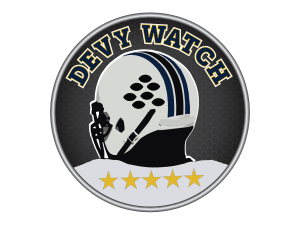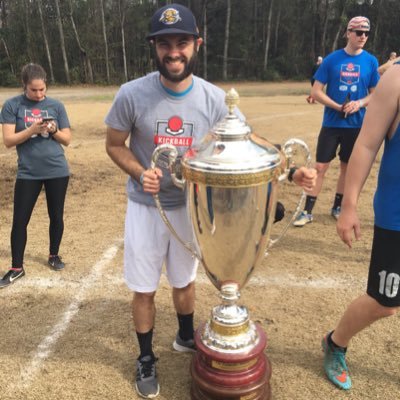“Journey before destination”
– Brandon Sanderson, Oathbringer
FSU QB deep dive.. Purdy over MM? (@iSportsDaily)
This is slightly premature for me to address this situation with confidence. The biggest question remains Milton’s health. To give clarity surrounding his timeline:
2.5 years ago – Milton suffered a leg injury, and his leg was without a pulse. The odds were likely that he was GOING TO HAVE HIS LEG AMPUTATED. To further illustrate the severity of the injury, this is an excerpt from a CBS Sports article, “If the same injury happens on the battlefield and there is no military hospital, soldiers die according to former Army superintendent Robert Caslen who was consulting at UCF at the time.”
1 year ago – Milton wasn’t running or jumping.
7 months ago – Milton started running.
4 months ago – Milton was fully practicing and running the scout team. I’m unclear if he was taking live shots, but I doubt it.
Real-time – FSU is conducting spring practice.
6 months ahead – FSU opens the season against Notre Dame.
We will know a lot more about Milton’s fall viability after spring practice. I’m more optimistic about his future than I was in the past, but I’m unlikely to feel confident about his ability to play at a high level and remain healthy behind an offensive line that has been, well, how do I say it? Not great in recent years. They do get everyone back, but how confident are we that they will improve? Again, more cautious optimism.
I believe that the Noles’ staff WANTS Milton to be the guy, so he should get every opportunity to be the man. If he is going to be challenged, I believe it’s likely Chuba Purdy that does it. I don’t have much faith that Jordan Travis can develop into the passer that FSU will need to compete in the ACC, but he’s got that precious athletic trump card. I am not all that familiar with Rodemaker and his capabilities in the spirit of full disclosure, so I won’t opine on his chances.
If I’m looking at this situation from a college fantasy perspective, I’ll likely avoid the room. It would be the same through a Devy lens. If I’m looking through a more pure college football lens or from a sports betting perspective, I will proceed with caution. I believe the line should improve, which is a MUST if they want to be competitive, but there are many more questions than answers at this point. The paths to a downward spiral far outweigh the opportunity to navigate the narrow road to significantly improved offensive play in ’21.
If FSU can land a LT in the transfer portal how many TDs will McKenzie Milton throw for? (@AEFerris)
Let’s take a look at Mike Norvell’s quarterbacks over the years:
Arizona State QB:
2012: 241-360-3040-29-9 passing, 133-520-1 rushing
2013: 302-484-3635-28-12 passing, 173-608-9 rushing
2014: 281-467-3556-34-9 passing, 121-272-3 rushing (2 QB’s)
2015: 318-531-3854-30-9 passing, 109-84-6 rushing
Memphis QB:
2016: 280-443-3698-32-10 passing, 71-(-)70-4 rushing
2017: 299-474-4257-38-9 passing, 54-22-6 rushing
2018: 246-392-3296-26-9 passing, 53-(-)43-1 rushing
2019: 269-420-4014-33-11 passing, 61-(-)71-4 rushing
FSU QB:
2020: 159-292-1771-10-13 passing, 142-592-7 rushing (4 QBs) (9 games*)
Let’s assume that you get your LT, and Milton stays healthy for 13 games in ’21. History shows that we can expect at least 26 touchdowns from Norvell’s QB1. Considering that the floor of 26 came at the mid-major level in the PAC12 and AAC, and we saw ten combined touchdowns (1.1 per-game) from four quarterbacks in Tallahassee last year, I’m not comfortable forecasting Milton beyond the 26 TD mark or 2 per-game. The volume should be there to prove me wrong, but in my scenario, you get your transfer LT, and Milton stays healthy for the season. A lot has to go right for that to happen.
How much can we expect the Houston Baptist offense to translate at WKU? (@TheSFGiantsGuy)
I think (hope) it’s going to translate. I recently went through and cataloged Kittley’s HBU offenses:
Houston Baptist QB:
2018: 252-436-2812-23-13 passing, 118-179-1 rushing (11 games*)
2019: 357-560-3811-35-15 passing, 53-0-0 rushing (12 games*)
2020: 141-215-1833-15-1 passing, 19-14-0 rushing (4 games*)
Houston Baptist RB:
2018: 100-497-1 (22-216-3 rec) (11 games*)
2019: 105-723-7 (11-141-3 rec) (8 games*)
2020: 40-137-0 (7-58-0 rec) (4 games*)
Houston Baptist WR:
2018: 68-684-4 (11 games*)
2019: 105-833-9 & 87-1139-12 (12 games*)
2020: 47-454-5 & 29-399-3 (4 games*)
Houston Baptist TE:
2018: 6-104-1 (11 games*)
2019: 0-0-0
2020: 3-32-1 (3 games*)
Kittley actually runs an iteration of Kliff Kingsbury’s Air-Raid. He was a GA and Assistant QB coach at Texas Tech and coached Pat Mahomes. This isn’t a particularly complex offense to run, and now that he has his former QB1 in Zappe, I think they can make a seamless transition. The majority of their offensive roster was recruited to run a comparable system. Brohm and Sanford were the previous head coaches before Helton, and there are some philosophical similarities in what all guys like to do. This isn’t Moorhead to Leach nor Johnson to Collins/Patenaude. Piggy couldn’t run this offense, but with the addition of Zappe, I think they are going to be fun from the jump. Zappe’s going to be in his fourth year as the starter in this offense and that means a lot to me.
I need a breakdown on Breece vs Bijan! (@DaDeano860)
I know that you are probably asking this from a college fantasy/DFS player’s perspective, so I’ll address that first and then give some thoughts on how they profile as NFL prospects.
Using my good friend Mike Bainbridge’s (@MBainbridgeCFF) pre-spring CFF rankings, he’s got Robinson as the overall RB1 and Hall as the RB2. I can certainly appreciate the optimism for Robinson in his sophomore season. Still, I would personally disagree with Robinson’s selection ahead of Hall, assuming both are available and one is on the clock. In recent years, Tom Herman’s offenses haven’t been good facilitators of fantasy relevant running backs. With the hire of Steve Sarkisian, the tide has turned in Texas. I wholeheartedly agree that Robinson’s value took an incredible vault with that decision, but I don’t expect him to have a season like we just saw from Najee Harris. While Sam Ehlinger informed us that Texas done been “BAAAACCCCKKKK”, I’m not quite ready to anoint them in year one of Sark’s reign. Texas’ OL isn’t littered with NFL prospects that can’t see the field because they are stuck behind other NFL prospects. That is a big deal for a running back. They will only go as far as their OL will take them. They return four of their five starters, and I think they will certainly be amongst the nation’s better groups, but I won’t confuse them with Bama’s group last year. Sure, Bijan was magnificent down the stretch last year, and he’s undoubtedly one of the top college talents in the country, but RB1 is a bridge too far for me. I’ve gotten myself in trouble when I get too speculative with my premium picks in a fantasy draft.
With Hall, no speculation is required. The now upperclassman has posted back-to-back 186-897-9 and 279-1572-21 seasons with 23 catches in each respective year. We’ve got a longer demonstrated track record of elite RB production from Matt Campbell than we do with Sark. Hall is one of the few backs that doesn’t take a back seat in talent to Robinson. ISU returns all five of their starters on last year’s line, a finalist for the Joe Moore Award, given to the nation’s best offensive line. They also get back a former starter who missed 11 games with an injury. Texas and Iowa State were neck-and-neck last year in “Line Yards” and Texas loses a R1 OT and multi-year starting QB while ISU returns their multi-year starting QB and gets one of their best linemen back.
I have no problem taking Bijan in the top five or ten; I just wouldn’t take him ahead of Breece.
In terms of both players as NFL prospects, pick your favorite flavor. Personally, I prefer Hall, but I’m significantly biased. Hall has been my guy since he was in high school. At the Devy Watch, we had both players ranked tied for first overall. We had to rank one of them first, but it was totally gridlocked with three votes apiece, so we gave Breece the cover and Bijan the overall top spot. I’m also a believer in the time value of money concept as it pertains to Devy, and Breece will likely enter the NFL a season earlier than Bijan, thus making him a more profitable asset. I don’t have the time nor desire to debate someone if they prefer Bijan as an NFL prospect; both guys are incredibly fun to watch play football and should have long, fruitful NFL careers.
The Ariz St. RB room, and across the league: how much stock is OK to put in a 4 or 6 game sample? Rachaad White led the team in rushing yards and scores, but averaged 10 YPC, which is clearly not sustainable. (@atldan)
I’m putting an asterisk in all of my team previews with the 2020 stats for any team that didn’t play a full twelve-game-season. More specifically, and in addition to that, White’s only competition for touches was an eighteen-year-old that wasn’t even a full-time running back in high school. Being three years older than Trayanum had its’ inherent advantages as well. White was in community college for two seasons before arriving at Arizona State, so he was more prepared than both Trayanum and Ngata. The thing that surprised me about Arizona State’s deployment of their backs was that they used two guys almost equally. Both Chip and Rachaad had 50 touches. Arizona State’s OC came from Boise State, where it’s rarely a RBBC. There was a lot of coachspeak before last season about Trayanum and Ngata being thunder and lightning, but White played the lightning role. Based on the statistical explosiveness that you noted and my evaluation of him on film, I believe they will likely deploy both guys in some sort of committee split again next season. That stinks for fantasy football purposes, but it’s intelligent coaching as both guys add value to their offense. Mr. Mike Bainbridge’s (@MBainbridgeCFF) pre-spring CFF rankings have White at RB30 and Trayanum at RB52. If I were going to choose between the two at those prices, Chip would be the easy choice for me to make. They touched the ball equally, although White got many more targets as a pass catcher, but I believe Trayanum is a future NFL running back, and White is unlikely to get as much attention from the big league.
To put a bow on this broader subject, I’m going to evaluate each team’s 2020 season on a case-by-case basis when it comes to forecasting ’21 and beyond. Still, I’ll likely lean more towards the data that came in a non-pandemic-year, assuming the offensive coordinator has a robust sample of play-calling tendencies.
How you feeling about the UK OC change? I was excited until the Levis’ transfer. Seems to fit the old scheme more compared to what was expected to come to Lexington this year. (@devywarehouse)
I agreed with your general assessment. It’s one thing to have Gatewood on the roster; he’s grandfathered in, but adding Levis doesn’t inspire much confidence in the new philosophy that they’ve been selling. In 2020, Levis had 82 rushes for Penn State compared to 55 passes. For Kentucky, Gatewood had 25 rushes and 35 passes last season. Neither guy has demonstrated they are capable of being SEC-level passers. Considering that Liam Coen was a QB coach for Sean McVay and Jared Goff’s Rams, neither guy fits the mold of what McVay likes to do and has helped several other of his staffers get promoted. As a big fan of Wan’Dale Robinson, I’m actually pulling for Beau Allen to win the job. He was offered by both Mike Leach and David Cutcliffe in high school, which means something to me. He’s got above-average athleticism, and I think his passing ceiling is well above both of the transfers. I will say, when I dug into Coen’s offense when he was the OC at Maine, I wasn’t particularly impressed. Here are those production numbers:
Maine QB:
2016: 166-318-2375-18-16, 36-56-0 rushing (11 games*)
2017: 171-313-2064-16-11 passing, 37-(-)40-1 rushing (10 games*)
Maine RB:
2016: 140-712-6 (11 catches)
2017: 243-1335-9 (30 catches)
Maine WR:
2016: 44-688-7 (9 games*)
2017: 32-425-5 (10 games*)
Maine TE:
2016: 1-12-0 (11 games*)
2017: 17-233-2 (10 games*)
So, using his time at Maine and as a position coach for the Rams, he’s never implemented an offense with a running QB. Consequently, Stoops’ last five offenses had the QB run game as a significant portion of the offense:
Kentucky QB:
2016: 145-265-2037-13-6 passing, 97-327-3 rushing
2017: 189-316-2305-10-6 passing, 103-375-5 rushing
2018: 180-268-1889-11-8 passing, 135-547-4 rushing
2019: 128-257-1478-9-8 passing, 226-1501-15 rushing
2020: 145-243-1336-7-5 passing, 129-486-5 rushing (11 games*)
Below are a few excerpts from a recent KSR interview with Coen:
“We did a pretty thorough personnel evaluation with the staff, just really diving into the personnel because at the end of the day, I have opinions and things, philosophies that I would like to instill and do here, but if it doesn’t match our personnel then it’s probably not the best fit,” Coen said…We were so much under center in Los Angeles and we would like to be that here, but a lot of these quarterbacks have never taken a snap under center before really in games,” said Coen. “Talking to Joey Gatewood, he’s never taken a snap under center in a game ever, not even in Pop Warner or in high school. They’ve been doing it here at Kentucky in practice over the last couple years, so they’ve gotten some reps at it.”
As much as Coen would like to operate most of the offense under center, it might not be a battle worth fighting. His time with the players is limited. Why waste all of it on perfecting footwork out of a snap when there are more important things to work on in the passing game.
“That’s a lot of time invested taking the snap under center, handing the ball off. It sounds elementary to us, but it’s so much more natural for these kids to take a shotgun snap and hand the ball off or to take a drop from the shotgun or the pistol. It’s a lot more natural for them and there’s other things we need to focus on.”
Of course, Coen did not get too detailed elsewhere in his observations of the team, however, he happily heaped praise on Josh Ali’s work ethic. Coen’s also excited to see what the ground game can do with Chris Rodriguez running behind the Big Blue Wall. “We’re big up front. We’re big. We’ve got a running back, a number of backs, but specifically, Chris Rodriguez that I think can run some of the concepts that we’d like to in the run game, getting downhill on people, mixing up a little bit of the outside stretch run game with some of the power run game that we’d like to be able to instill.”
Hopefully, we will learn a bit more about this offense after Kentucky’s spring practices. I wonder if 2021 will end being an effective “Year Zero” for this offense?
What players generated the most debate/discussion while creating ranking in this year’s devy watch and why? (@T_RevIsRev)
We debated Bijan versus Breece as the overall #1 for a bit. Ultimately, that discussion came near to the publishing date, so we were all exhausted and really didn’t care to get stuck in the weeds with something that is more symbolic than impactful. We talk a lot about how to value the most talented backs that are borderline in terms of listed weight. Guys like Jerrion Ealy and Kyren Williams come to mind. We had a long discussion about Justyn Ross and how comfortable we felt with his medical history.
To begin the ranking process, we start with a blank slate and create our top tier, and once we feel like we have that tier sorted out, then we go to the next tier. Once we have soft tiers created, all six of us rank those guys within that specific tier. We take the averages and then create ranks within that specific tier. If we have a guy that ranks at the bottom of a tier, with the overwhelming majority of the vote, we discuss whether we want to drop them down a tier. We implement that same process when considering moving a player from the top of a tier to the bottom of a more prestigious tier. We’ve found that this process allows us to best express our collective view on a prospect. It’s far from perfect, but it’s the best option that we’ve come up with to this point in our evolution.
The biggest debates and discussions centered around ranking freshmen receivers. I was responsible for writing the 2024 WR addendum that we included in this year’s publication. Once we agreed that there would be very little opportunity this season for any of the top guys we ranked, we had to decide if we wanted to keep them all in a single-tier and then which tier it should be. To be transparent, I think we probably dropped them down one tier too far. I’ve been extremely vocal over the past several years about my belief that we rank freshmen too highly—receivers, in particular. One or two of them may pop this year, but more than likely, a Jordan Addison or Marvin Mims will emerge and find themselves more squarely on our radar this time next year. It happens nearly every year. We debated how we can articulate our appreciation for these players while encouraging our readership not to overdraft them. I still don’t think we did it as well as we all would have liked, but we have six members on our team, and none of us share the same evaluative philosophies. It’s part of what makes us good at our jobs. We have a mechanism akin to checks and balances that we put all of our prospects through. As an evaluator on the team, you often have to concede that several of “your guys” are going to be ranked too high or too low. You can’t take it personally. Ultimately, our structure helps the collective, but you will sacrifice some of your own preferences as an individual.
One fun thing that we’ve done on the initial “ranking summit” call is given everyone an opportunity to “play a card” (or a few). That’s essentially the ability to plant a flag on a guy that you have a specific conviction with and graft them into a specific tier. Once we have the tiered rankings set, we let them breathe for a few weeks, and it gives us all time to process our collective rankings and discuss if any players need to move up or down. If you’ve ever tinkered with a set of rankings, you can imagine how allowing this can often open up Pandora’s Box, so you have to finally draw a line in the sand and create a hard stop for when the tinkering must end, and we must go to print. Overall, it’s a fun process, but this comes at the end of months and years of evaluating these prospects, so you’ve gotta battle through some fatigue that often coincides with the totality of the process.










